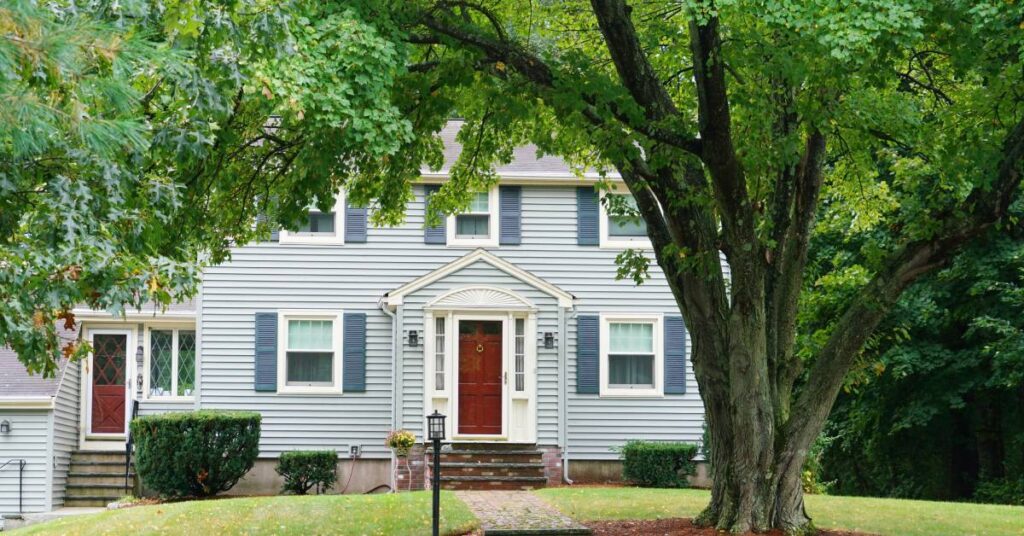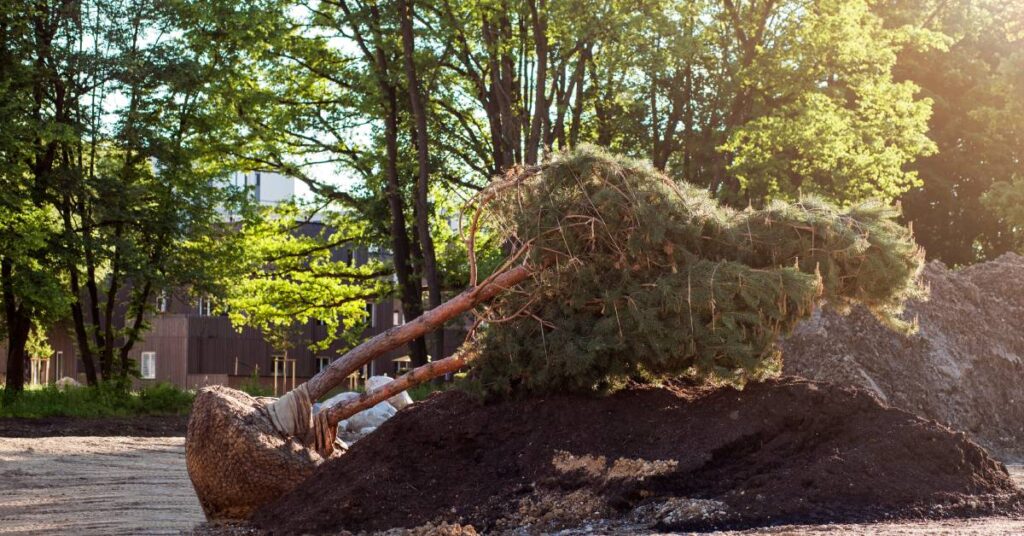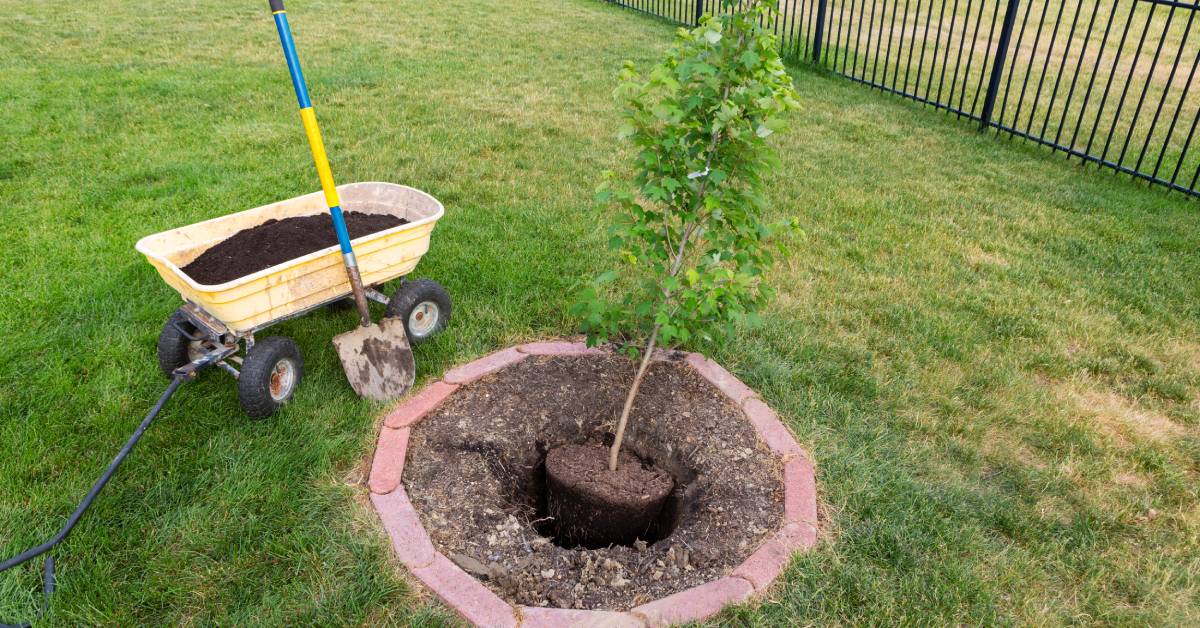Have you found yourself looking at a tree in your yard and wondering if it would thrive better in a different spot? Or perhaps you’re planning a landscape redesign and want to preserve a cherished tree. If so, tree transplanting might be on your mind. But is it right for you?
We’ll provide a quick overview of tree transplanting, the pros and cons, essential considerations before taking action, and the steps required for a successful transplant. By the end, you’ll have a clear understanding of whether tree transplanting is right for you.
What Is Tree Transplanting?
Tree transplanting involves relocating a tree from its original spot to a new location. Depending on the size and age of the tree, this can be done either manually or with the help of machinery. The goal is to move the tree without causing significant damage to its root system, ensuring it can continue to grow and thrive in its new environment.
The process begins with careful planning, including selecting the appropriate time for transplanting and preparing the tree and its new location. Successful tree transplanting requires attention to detail and a deep understanding of the tree’s needs and the conditions of the new site.
Scenarios in Which To Transplant a Tree
There are several common scenarios in which homeowners might consider transplanting a tree. One reason is landscape redesign. If you’re planning to revamp your yard and want to keep a beloved tree, transplanting allows you to incorporate it into the new design without sacrificing its presence.
Another scenario is when a tree has outgrown its current location. Sometimes trees planted too close to buildings, driveways, or other structures need to be moved to prevent damage to property and ensure the tree’s continued growth. Additionally, transplanting might be necessary if a tree is not thriving in its current spot due to poor soil conditions, inadequate sunlight, or other environmental factors.
Understanding the Pros and Cons
Before deciding to transplant a tree, weigh the pros and cons of the process. While there are significant benefits, there are also challenges that must be considered. Understanding both sides will help you make an informed decision that aligns with your goals and the tree’s needs.
Pros

Transplanting a tree offers several benefits. First, it allows you to preserve mature trees with sentimental or aesthetic value. Instead of cutting down a beloved tree, transplanting can give it a new lease on life in a more suitable location.
Transplanting can also enhance your landscape design. By strategically relocating trees, you can create a more balanced and visually appealing layout that maximizes the use of available space. You can improve their overall health and growth by placing the trees in environments where they can thrive.
Cons
Transplanting a tree also comes with its challenges. One significant drawback is the potential damage to the root system. Even with careful planning, some roots will inevitably be lost or damaged during the process, which can stress the tree and affect its health.
Tree shock is another concern. Transplanting is a traumatic experience for a tree, and it may take time for it to recover fully. During this recovery period, the tree might experience water stress, decline in health, or slowed growth. Additionally, there is always a risk that the tree may not survive the transplant, especially if it is already in poor health or the conditions at the new site are not ideal.
Factors to Consider Before Transplanting
Before you decide to transplant a tree, there are several crucial factors to consider. The age and size of the tree play a significant role in determining its likelihood of survival. Younger and smaller trees are generally easier to transplant and have a higher success rate compared to older, larger trees with extensive root systems.
Timing is another important consideration. The best time to transplant a tree is during its dormant season, typically in late fall or early spring. This minimizes stress on the tree and gives it the best chance to establish itself in its new location before the growing season begins.
Additionally, assessing the tree’s health and the suitability of the new planting site is essential. A healthy tree is more likely to survive the transplant process, while a site with adequate sunlight, soil quality, and drainage will support the tree’s continued growth.
Steps in the Transplanting Process
Transplanting a tree involves several steps, each crucial to the tree’s success. The first step is to prepare the tree and the new planting site. This includes digging a hole at the new location large enough to accommodate the tree’s root ball and amending the soil if necessary.
Next, you’ll need to prune the tree’s roots. Root pruning encourages the growth of new feeder roots, which are essential for the tree’s recovery after transplanting. Carefully dig around the tree to create a root ball, preserving as many roots as possible.
Once the tree is prepared, it’s time to move it to its new location. Depending on its size, this may require machinery or several people to help lift and transport it. After positioning the tree in the new hole, thoroughly backfill it with soil and water to help settle the roots.
Aftercare is critical to the tree’s survival. Provide regular watering, especially during the first few months, and consider adding mulch to retain moisture and regulate soil temperature. Monitor the tree for signs of stress and address any issues promptly.
Is Tree Transplanting Right for You?

Deciding whether tree transplanting is right for you involves careful consideration. Evaluate the specific reasons for transplanting and whether the benefits outweigh the challenges. If the tree has significant sentimental or aesthetic value or is essential to your landscape design, transplanting might be worth the effort.
Consulting professionals can also be beneficial. Tree transplanting is a complex process, and experts can provide valuable guidance and support to ensure the best possible outcome. They can assess the tree’s health, recommend the best timing, and handle the transplant with the necessary care and expertise.
Tree transplanting offers a way to preserve and enhance your landscape by relocating trees to more suitable locations. While it comes with challenges, careful planning and execution can lead to successful outcomes. After reviewing this complete guide on tree transplanting, you can determine whether this is right for you and take the necessary steps to ensure your tree’s health and growth.
If you have any questions or need professional assistance, contact Watts Tree Service. We’re here to help with all your tree care needs, including tree pruning services. We’re excited to hear from you!
Last modified: April 25, 2025

